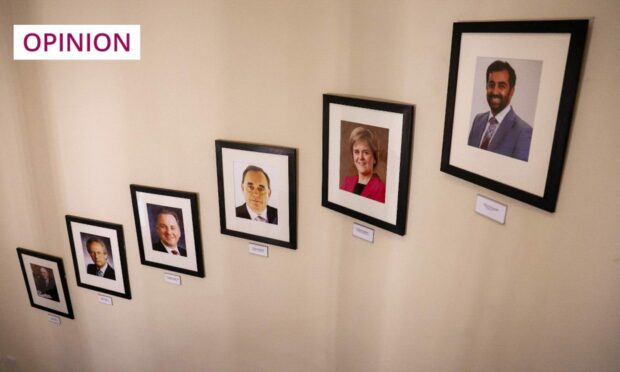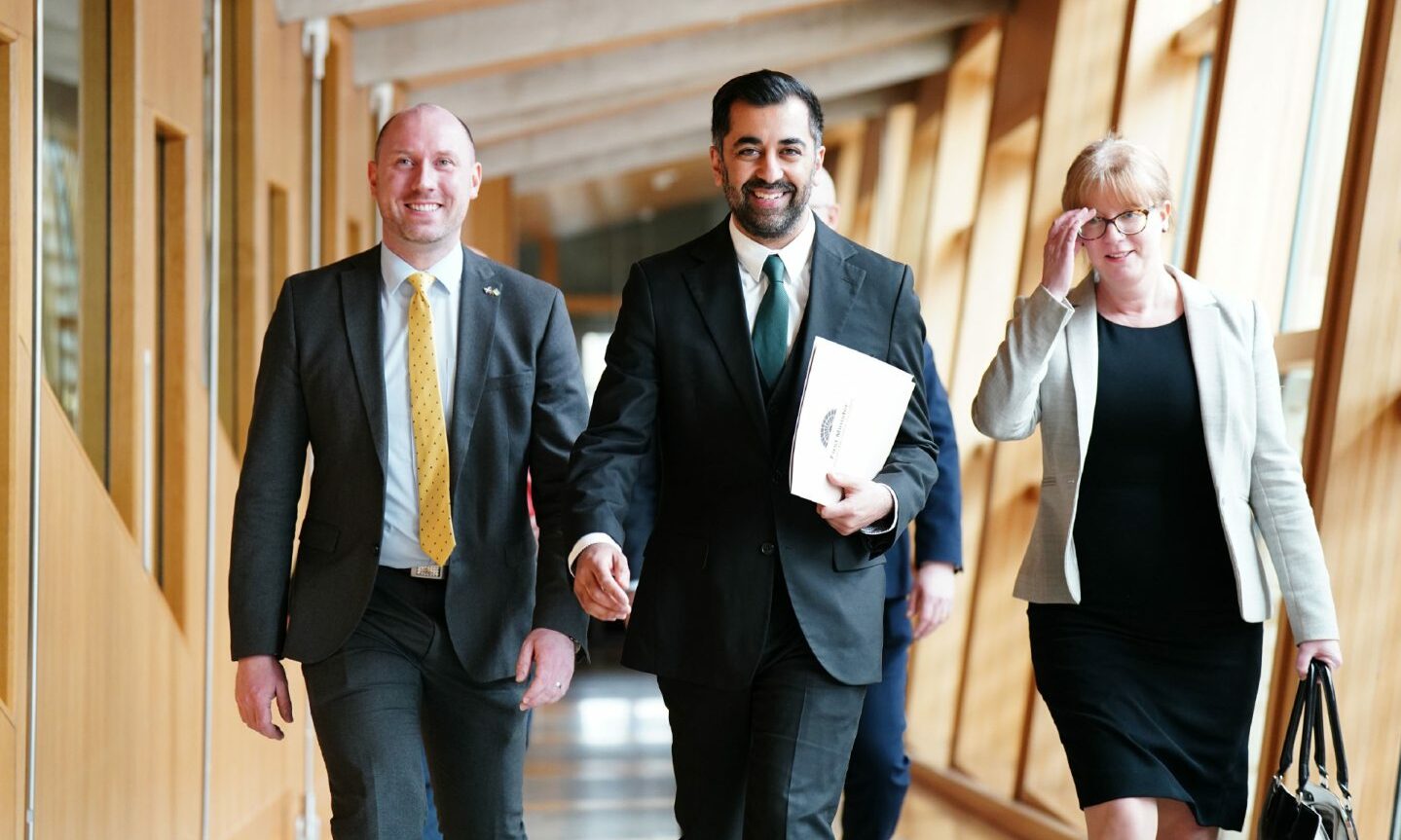There has never been any doubt that when Nicola Sturgeon stood down as SNP leader and first minister there would be chaos. Particularly as no one had been seen as a rising star in the way Sturgeon was when Alex Salmond resigned.
The fact is that both Salmond and Sturgeon were charismatic, personable and good communicators. A gift in politics, but a hard act to follow in any party.
As Sturgeon stood down, it was noticeable that all the experienced, senior SNP politicians in Holyrood stood back. None of them wanted the job. They wanted the power, but not the responsibility that goes with it.
That’s quite remarkable, particularly as it’s an honour to lead any large political party. But the post of first minister of Scotland appeared to be seen as a poisoned chalice. In fact, many people often say they believe the SNP’s best political talent has actually gone to Westminster rather than Holyrood.
However, the two front runners were Kate Forbes – the former finance secretary, who is very able, ambitious, and can more than hold her own – and Humza Yousaf who, despite appearing to have left failures in all his ministerial jobs, had the backing of the senior party contingent.

I think it’s ironic that Kate Forbes seemed to be the public’s choice, yet Humza Yousaf had the party backing and eventually won. Interestingly, a similar situation to Liz Truss and Rishi Sunak in the Tory party.
In the series of leadership candidate debates, Humza Yousaf’s record was brutally exposed. Serious failures in the police when justice secretary, record high waiting times and poorer performing accident and emergency departments than either England or Wales in the NHS whilst in charge of health, failure to upgrade the A9 and the poorest running rail service when transport secretary. There is clearly much to correct.
Meanwhile, no one in the Scottish Government could explain why the directors of the fiasco ferries were all paid bonuses when the system had completely failed to deliver on time and on budget, let alone the controversy over the award of the contract.
On top of that, Scotland has the highest recorded drug deaths in Europe. Nothing to be proud of here.
Independence is not the priority for all Scots
Yet, when Mr Yousaf was voted in as first minister, he stated his priority and number one goal as to achieve independence.
In a good opening speech, he also said he wanted to unite his party and the country. Well, it may have escaped his notice, but independence is an extremely divisive issue which previously pitted families and communities against each other, and still does.
A recent poll found independence was not a high priority for Scottish voters. First came the cost-of-living crisis, where the public feel nothing additional is being done to help them.
Understandable tears in Woodside as it closes its doors for what @aberdeen_cc want to be for the last time. A library that was entrusted to the council to be of service to the community and nothing else. Aberdeen’s oldest library filled with local history.
The utter shame of it. https://t.co/SWzFmtWUEx
— Save Aberdeen Libraries (@SaveAbdnLibs) March 30, 2023
The difficulty with the SNP is that they are a movement campaigning for independence, not a robust political party. Hence, their issue is not simply a political one: it’s a credible delivery problem.
We see it in Aberdeen, where the SNP-led council has decided to close public libraries in Cults, Kaimhill, Woodside, Northfield, Cornhill and Ferryhill. No consultation was held with the local people in those communities, nor any alternatives suggested.
Libraries are not just about lending books: they provide vital early years learning programmes, internet access for those who need it, and warm spaces during cold weather spells. They also lend CDs, DVDs, and act as community hubs, bringing people together.
Respect and understanding are needed
I have written in the past about how the people of Torry were let down by the council voting to destroy the St Fittick’s Park, against the wishes of locals. When those same people heard that the Big Noise musical project designed to help young people in areas of deprivation was to be starved of cash, they stood up and fought for it.
The Scottish Government intervened and agreed to continue the Big Noise funding, despite the decision of local councillors. This reaction proves that governments fear the voice of the people. Even with finite resources, governments can always find money when there is pressure to do so.
The SNP needs to understand that someone having a different point of view does not automatically make them an enemy. SNP politicians need to learn to respect the positions of others, the ruling of the Supreme Courts, the UK Government, and the people who don’t vote for them.
They need to concentrate on less aggressive chip-on-the-shoulder politics, where everyone else is given the blame, and focus more on delivering in a competent way for the people who elected them.
The SNP hopes for Scotland to be separated from the UK in five years but, as the Scottish Government has proved, it wasn’t even able to build three ferries in that period of time.
Len Ironside CBE is a former champion wrestler who served as an Aberdeen councillor for 35 years, with four years as council leader.


Conversation